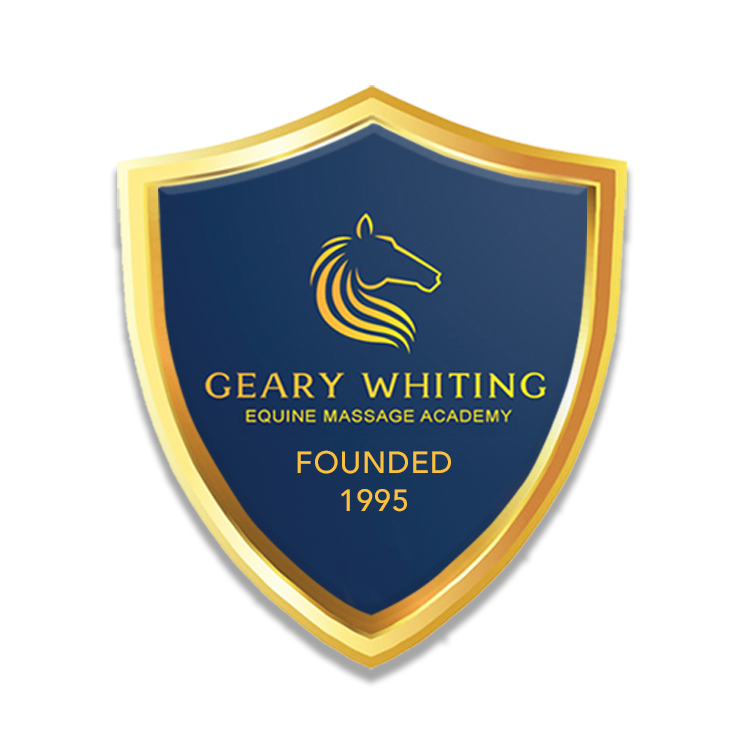You’re Doing What? Part 1
By Deneen Peckinpah, CESMT
This is the awesome beauty of muscle and movement, high voltage energy, vital force. The needle on my trust meter moves rapidly from one extreme to the other as I reach out to touch Cherokee. I flash on the words of a friend, “You’re doing what? Do you know how big a horse is? Do you have any idea how much muscle there is? What are you smoking and can I have some?”
Maybe he has a point. If you’re 62 years old, out of shape, haven’t been near a horse since the age of 18 and are scared of almost any horse in the world, horse massage does seem a strange choice for a new career. Perhaps I should have paid more attention to my horrified friends. When I said to one woman who loves horses that horse massage would be a great thing for her to do, she looked appalled, “No way! I’m not interested in getting kicked to death.”
After twenty years as a Reiki therapist, I decided to study equine sports massage in order to become more at ease with the power of horses and with my own power as well. Enduring a period of flipping back and forth between extremes of comfort and fear seems to be part of the bargain. Fortunately, the horses and those who are truly attuned to them are helping me overcome my fear. As they teach me their language, I feel more trusting of my ability to understand what a horse is saying through movement. A flick of the ears no longer flicks my panic button.
Fortunately, I found a school that was just perfect for me: the Geary Whiting School of Equine Massage. Geary reassured me right away by telling me that he hadn’t gotten over his own fear of horses until he’d been working with them for a couple of months. He became a highly successful horse massage practitioner and then went on to start his own school. By the time Geary’s interest turned to horses, he was already a master of Shiatsu. Geary worked with human athletes for forty years as a personal trainer, twenty-two of those years as a massage therapist. He and double amputee Bob Wieland were featured in the February 1989 cover story of Massage Magazine. Always a high achiever, Geary’s goals for the horse massage school reflect both his professionalism and his holistic approach to teaching. He teaches a way of life. Geary emphasizes character building, fitness, laws of success, laws of health, and getting results as a massage therapist.
In addition to everything else, Geary is a musician and motorcycle aficionado. He loves freedom and playfulness, so school is an unforgettable experience.
The whole five days were like a vacation. Each student had a private cabin, with fresh flowers, fruit, nuts, and a comfortable bunk. The Whiting Ranch, located in one of the most pristine, beautiful mountain areas of Northern California, includes woods and a swimming hole. Each class also gets a chance to go “downriver” for treats and an experience of the countryside on the way to the coast.
We were so relaxed and having so much fun every day, learning was easy. Even the anatomy basics were taught in a playful way, and we still got all the information necessary to create a foundation for competence. Geary’s attitude toward this work is one of the things I found most appealing. He’s a very loving man and encouraged us to approach our work as an opportunity to bond with the horses through this intimate, sensual art of healing touch. His teaching methods are such that even an inexperienced person can give a good equine sports massage after only one week of intensive training. Not only did I learn how to give the massage, but I also learned how to assess the probable needs of an equine athlete, how to develop the upper body strength one needs for this work, how to demonstrate some massage basics for groups of owners and trainers, and how to get started in the business.
One of the many “perks” offered by the Whiting School is that each student receives a videotape to take home at the end of the training. Each tape includes a step-by-step demonstration (by Geary) of a complete horse massage, also a demonstration of the bodybuilding techniques he teaches, and each student doing a presentation as though speaking in front of a group. This last includes Geary’s thorough-going critique of each presentation. In addition to this training, he lists all graduates of the school on his website.
Geary’s school bases its curriculum on Shiatsu, which works along the lines of the acupressure meridians. As most readers of this magazine know, Shiatsu opens all energy pathways, releasing blockages and re-establishing a free flow of energy. This induces whole-body relaxation, increasing vitality and mobility, as well as stimulating and nourishing the various glandular and organ systems of the body. Although we learned a variety of techniques for working with and relaxing the muscles, pressure point therapy served as the foundation for every massage.
The mainstay of this program is hands-on practice. Before going out to work with the horses, we learned the basic techniques we would be using: rotation/sedation, cross-fiber, percussion, and kneading. First, Geary demonstrated the various techniques on a student. As each of us copied his technique on that same student, we received feedback on how our touch compared with the standard Geary had set. Everyone got to be on the table to experience the way a particular technique should feel. Then, we practiced on Geary. Geary’s rule of thumb is, “Apply as much pressure as the horse will allow.”

